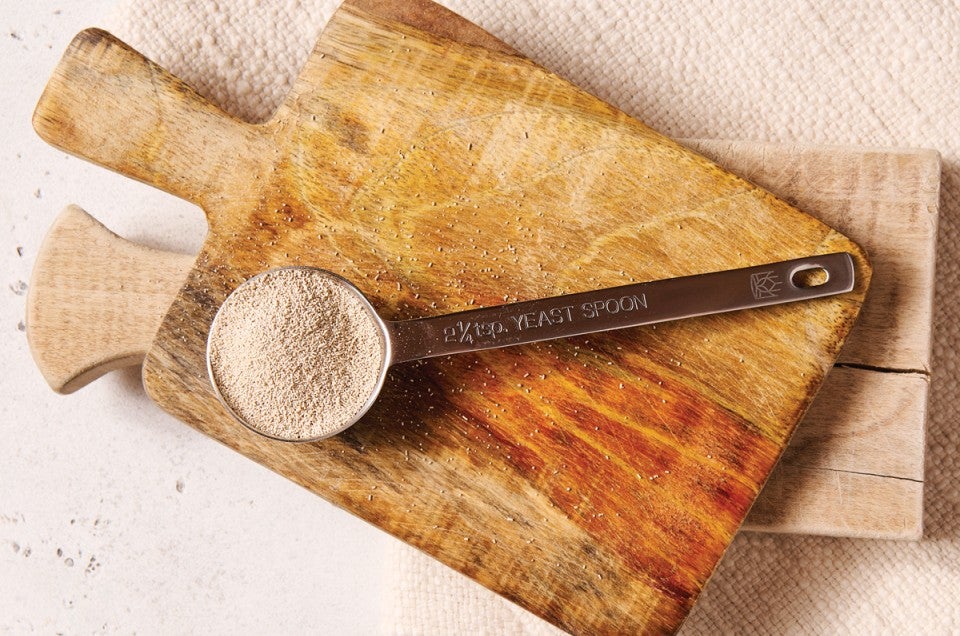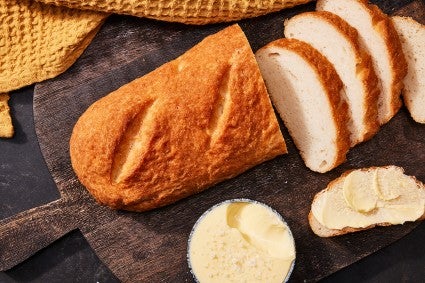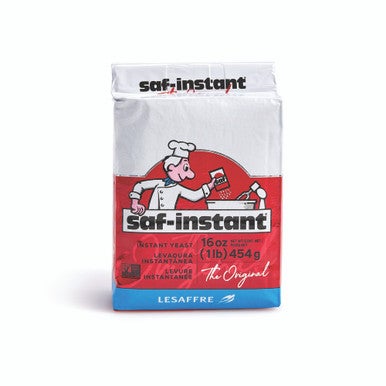


If you’re baking gluten-free, you know that some unexpected ingredients may contain gluten. One common question we get: Is yeast gluten-free?
Yes, the kind of yeast that’s used for baking bread is gluten-free. Baker’s yeast is a single-cell organism that consumes sugar and starch and produces carbon dioxide and alcohol through fermentation. That yeast, however, is a key ingredient in bread, which is traditionally not gluten-free. To understand this more, let’s dig into the science of how gluten and yeast work together.
Gluten is formed when certain flours and water mix together. Conventional wheat flour (like all-purpose, bread flour, and cake flour) contains two proteins necessary to form gluten: glutenin and gliadin. When water is added to these two proteins, they link together, forming gluten. Mixing and kneading cause strands of gluten to connect to each other and make a web that gives structure to baked goods — the more you mix, the stronger the gluten network will become.
And here’s where the yeast comes in: When yeast is added to the mix, that strong, stretchy gluten network traps the carbon dioxide that yeast produces, filling up the dough like a balloon and causing bread to rise.

Yes! Because yeast itself is gluten-free, as long as you use gluten-free flour blends you’ll have a 100% gluten-free loaf. Gluten-free flour blends typically combine non-wheat flours (like rice or sorghum flour) with other starches and stabilizers to offer alternative ways to capture the carbon dioxide produced by yeast, without creating gluten. King Arthur’s Gluten-Free Bread Flour is specially formulated to work for yeast-based recipes to make baked goods like artisan bread, chewy bagels, or gooey-soft cinnamon rolls. It contains gluten-free wheat starch, which mimics the flavor of conventional wheat flour and thickens doughs so they’re shapeable. It can be swapped 1:1 for the bread or all-purpose flour called for in traditional yeasted recipes, though you may need to make a few tweaks.
To determine whether an ingredient is gluten-free, you can first look on the product’s packaging for third-party certification, such as the seal from the Gluten-Free Certification Organization, which reads “certified gluten free.” You can also look for the words “gluten-free,” “no gluten,” or “without gluten,” which are terms regulated by the FDA. Lastly, you can scan the ingredient list for items like wheat (including spelt, emmer, farro, and durum), rye, barley, malt, and brewer’s yeast (a different kind of yeast that’s a byproduct of beer brewing) — if any of these are included, the ingredient is most likely not gluten-free. (Though there are some exceptions, like the gluten-free wheat starch in Gluten-Free Bread Flour.)
The yeasts from SAF and Red Star (both made by the Lesaffre company) in the King Arthur shop do not carry third-party certification, but are listed as gluten-free on Lesaffre’s website.

Cover photo by Danielle Sykes.

